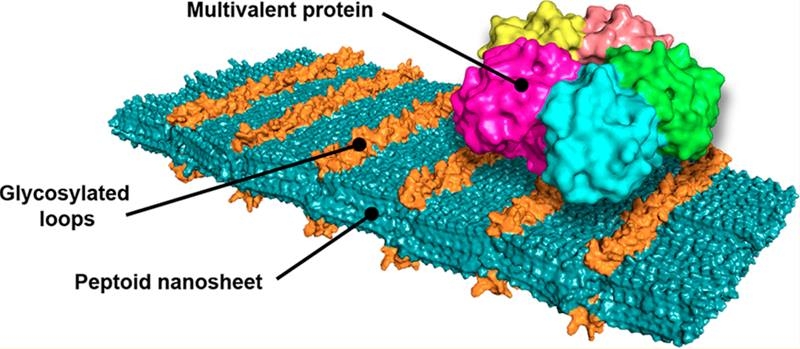The Science
Researchers developed molecular flypaper that recognizes and traps viruses, bacteria, and other pathogens. The team devised a process for creating ultrathin, self-assembling sheets. Potentially, scientists could use the team’s process to inactivate or detect microbes that can cause disease.
The Impact
For the first time, scientists have engineered nanostructures with such sophistication that the materials approach the structural precision and complexity found in nature. The new approach offers a host of benefits. It will enable materials that can selectively detect proteins and, potentially, viruses and cells. Biosensors, therapeutics, and the remediation of threat agents could all benefit from such materials.
Summary
In nature, the ability to bind to multiple sites at once plays a significant role in guest-host recognition, cellular adhesion, signal processing, etc. This ability to bind is called multivalency. Viruses, bacteria, and other infectious pathogens specifically recognize host cells through multivalent interactions with sugars on the cell membrane to start the infection process.
A team led by Molecular Foundry researchers developed a method to create peptoid nanosheets that can selectively bind multivalent proteins. The team is building on their past development of peptoid “molecular Velcro.” The researchers took advantage of the affinity of many proteins for carbohydrates and customized the surface of peptoid nanosheets with a variety of simple sugars.
The research team combined atomic-level precision with a modular synthesis method to engineer the peptoid nanostructures. By using peptoids, rather than standard polymers, the researchers precisely controlled the monomer sequence and introduced specific modifications that dictate the final structure of the produced nanosheets, resulting in a customizable framework for recognizing sugar-binding proteins. The sugars were attached to the peptoid nanosheet using compounds of different lengths or within chemical loops.
The result is a hydrophilic, stable, free-floating sheet that scientists can readily functionalize to resemble the surface of a cell. While there are other methods to synthesize multivalent compounds containing sugars, the products are generally heterogeneous and difficult to optimize because there is no structure-function relationship. Similarly, there are many 2-D nanomaterials, but they aren’t stable, free-floating, biocompatible, customizable, and easy to make. The team’s structures approach the structural precision and complexity found in nature.
Funding
This project was funded by the Defense Threat Reduction Agency and the Defense Advanced Research Projects Agency Fold F(x) program. The work was conducted at the Molecular Foundry with support from the Advanced Light Source at Lawrence Berkeley National Laboratory, both of which are supported by the Office of Science, Office of Basic Energy Sciences, Department of Energy. J.H.K. acknowledges the National Research Foundation for supporting the postdoctoral fellowship granted by the Korean government.
scraped from https://www.newswise.com/articles/tiny-sugar-coated-sheets-selectively-target-pathogens
